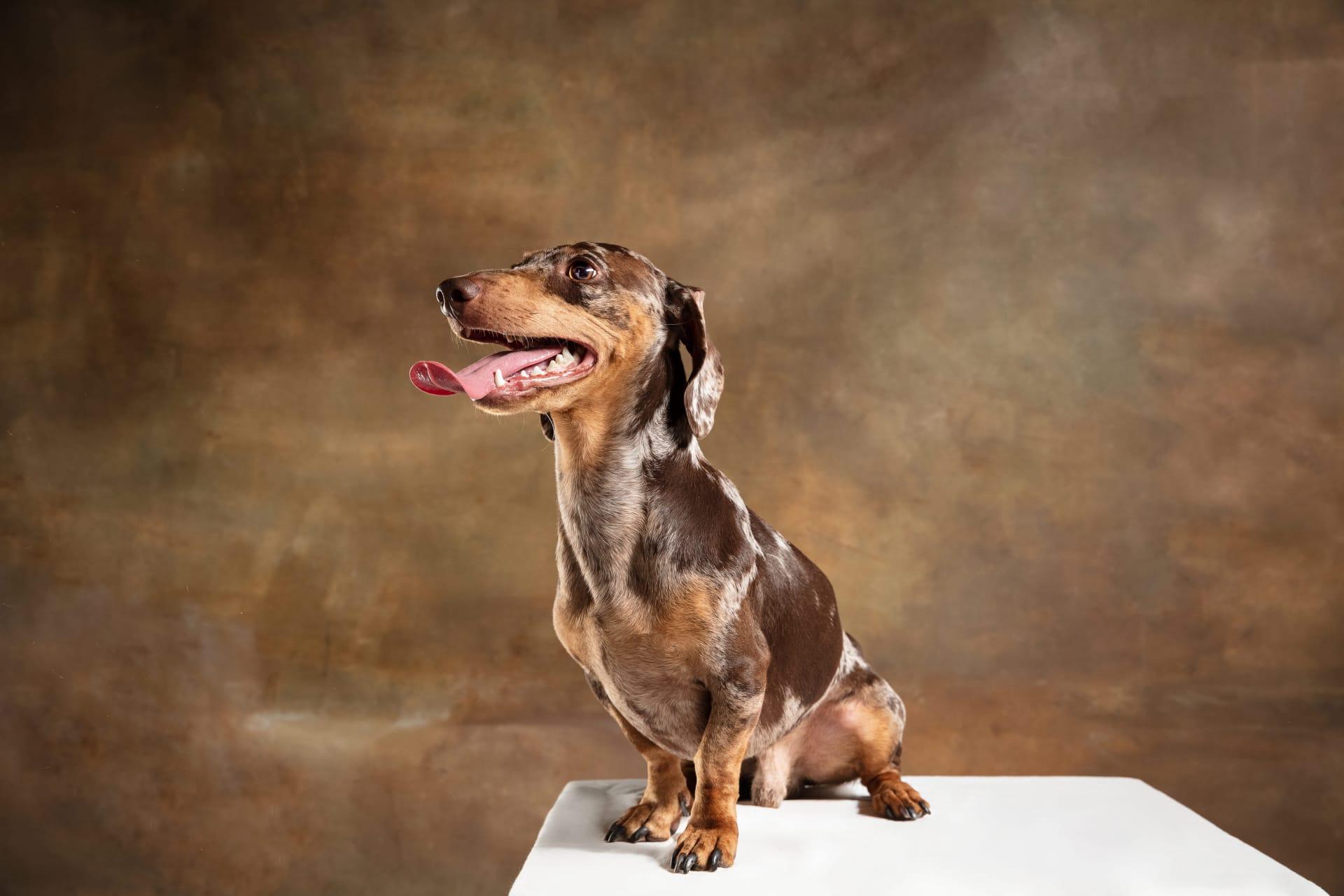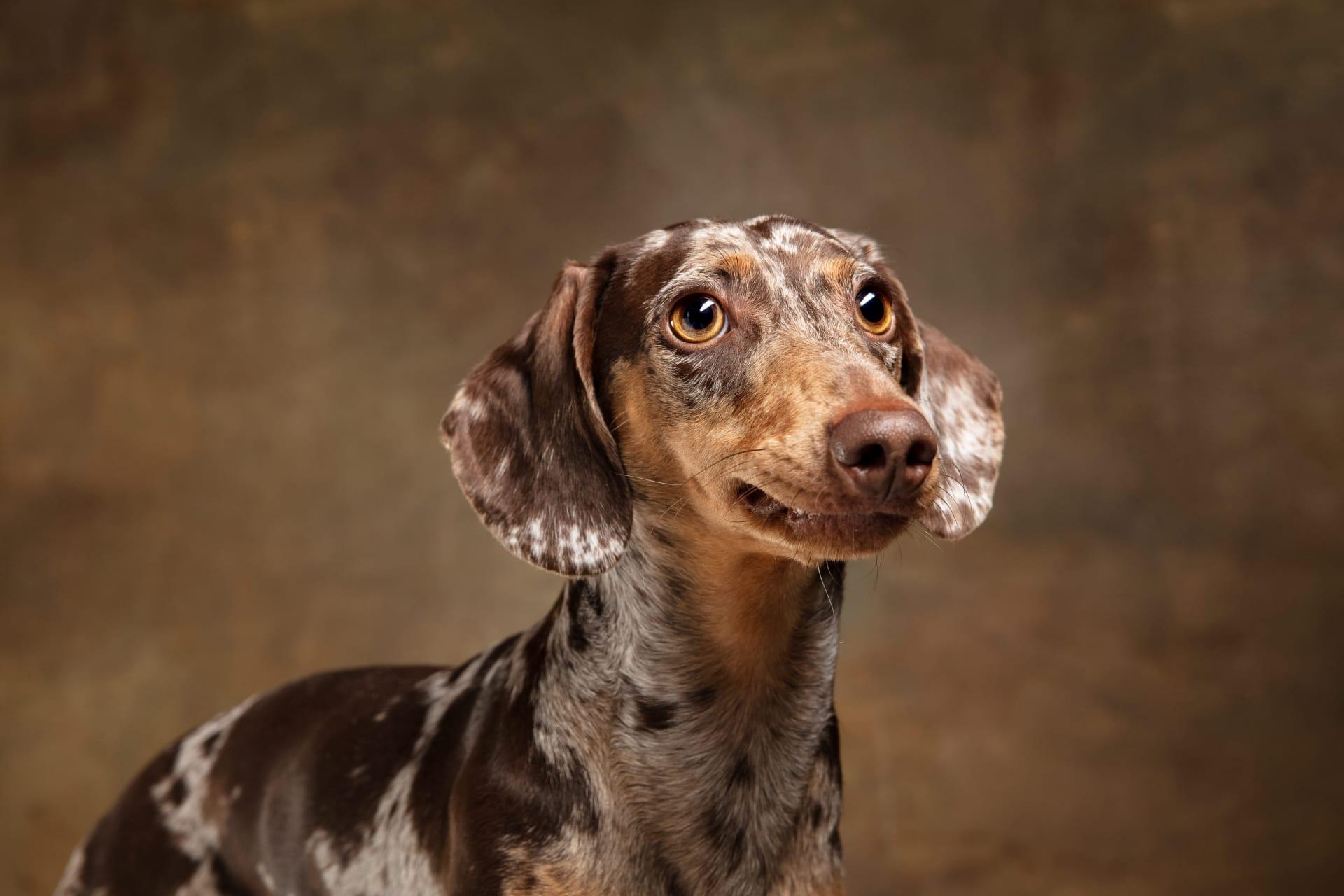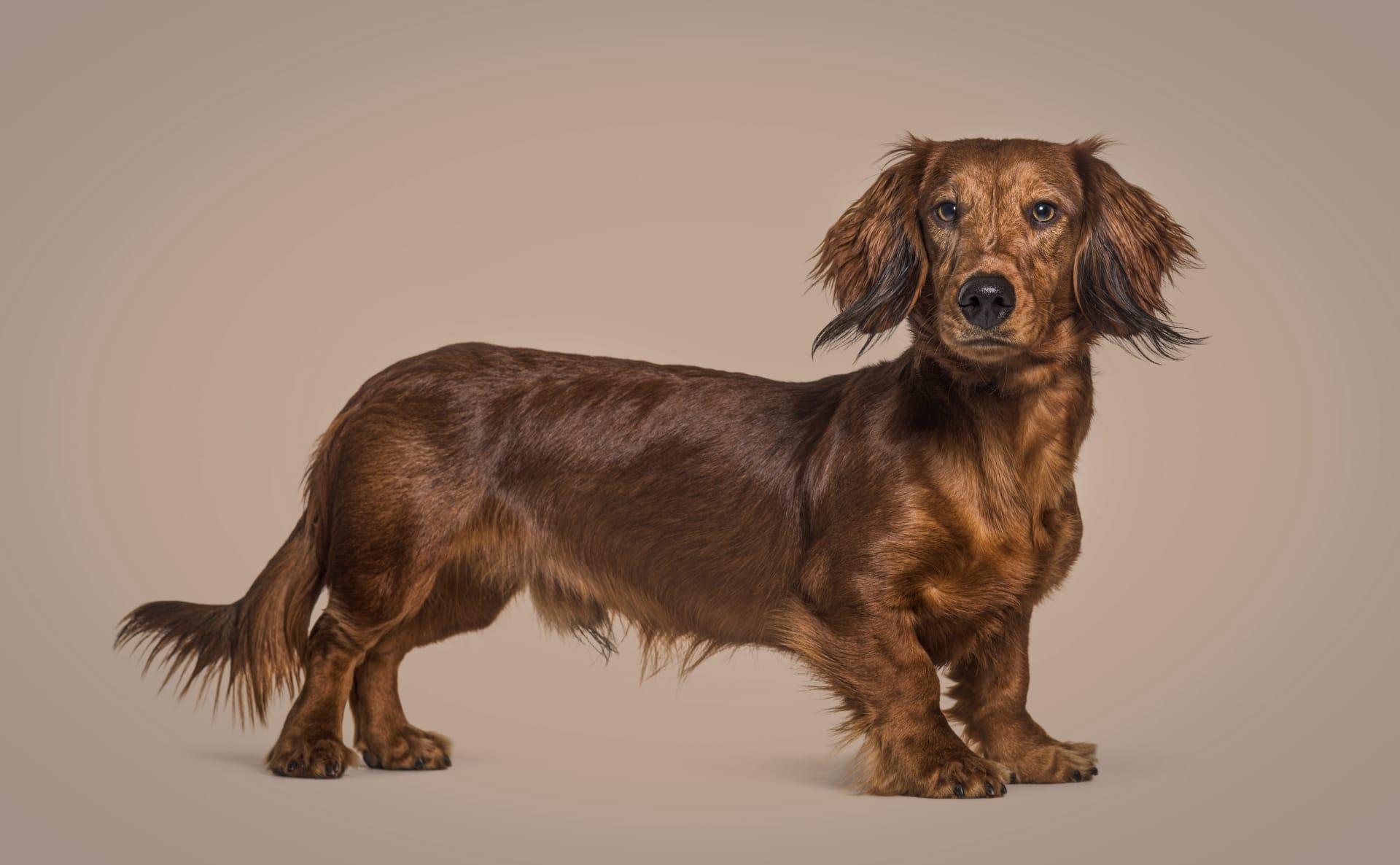Dachshund Characteristics
- Home /
- Mini Encyclopedia /
- Animal /
- Dachshund Characteristics
1
Dachshunds, affectionately known as "wiener dogs" due to their distinctive long bodies and short legs, present a unique silhouette that's hard to miss. Originating from Germany, these little hunters were bred for flushing out tunneling animals like badgers, which explains their elongated shape. Adult Dachshunds typically weigh between 16 to 32 pounds, depending on whether they're of the standard or miniature variety. Their coat can be smooth, long, or wire-haired, offering a delightful variety of textures. When it comes to longevity, Dachshunds have a hearty lifespan, often living 12 to 16 years with proper care, making them a long-term companion for their human pals.
One of the Dachshund's most remarkable organs is its keen nose, which boasts an exceptional sense of smell. This trait is a vestige of their history as hunting dogs, designed to sniff out prey in dense forests and underground burrows. Their olfactory system is highly developed, allowing them to detect scents that are imperceptible to humans. This powerful nose makes Dachshunds excellent at scent work activities and even competitive tracking events. The ability to process and differentiate between a vast array of smells enables them to follow trails with precision, showcasing their inherent skills that go beyond just being adorable companions.

2
Question: Why do Dachshunds often suffer from back problems?
Answer: Dachshunds are prone to back issues primarily due to their long spinal column and short rib cage, a condition known as intervertebral disc disease (IVDD). The unique structure of their spine, coupled with their short legs, puts excessive strain on their vertebral discs. Activities such as jumping on and off furniture or climbing stairs can exacerbate this strain, leading to disc herniation or other spinal problems. It's crucial for Dachshund owners to monitor their pet's activities, discourage high-impact exercises, and maintain an ideal weight for their dog to mitigate the risk of back injuries.

3
Dachshunds display quite an interesting mix when it comes to their exercise needs. Despite their small size, they possess a surprising amount of stamina and an eagerness for play. Regular, moderate exercise is essential for them, with walks ideally totaling 30 to 60 minutes daily. Their heritage as hunting dogs means they enjoy activities that engage their minds and senses, like scent games or gentle fetch. However, due to their long backs, care should be taken to avoid strenuous activities that might strain their spine.
Regarding their dietary habits, Dachshunds are known for their hearty appetites, which means their food intake must be carefully managed to prevent obesity, a common issue in the breed. A balanced diet rich in nutrients, tailored to their size, age, and activity level, is vital. Treats should be given sparingly, and their weight regularly monitored to ensure they stay within a healthy range. Due to their propensity for back issues, maintaining an ideal weight is not just about aesthetics but crucial for their overall health and mobility.

4
The preferred living environment for a Dachshund combines indoor comfort with access to a secure outdoor space. As adaptable companions, they thrive in various settings, from apartments to houses with yards, as long as they have regular opportunities for exercise and mental stimulation. Their small size makes them excellent indoor pets, but their energetic nature and hunting instincts mean they also appreciate outdoor adventures within safe, enclosed areas to prevent them from chasing after perceived prey.
Dachshunds are known for their spirited and affectionate nature, which plays a significant role in their breeding behaviors. They typically have litters of 1 to 6 puppies, with the average being around 3 to 4. Socialization from a young age is crucial for puppies to develop well-rounded personalities, as Dachshunds can be somewhat reserved with strangers and protective of their family. Breeders must pay close attention to health screenings, particularly for spinal and genetic issues, to ensure the well-being of future generations.

5
Book: "The Dachshund Handbook" by D. Caroline Coile Ph.D. Hailing from the United States and published in the early 2000s, this book offers a comprehensive look into the Dachshund breed. Caroline Coile, an esteemed canine expert, delves into the history, care, training, and health of Dachshunds, providing invaluable insights for both new and experienced owners. Her clear, accessible writing style makes complex topics easy to understand, emphasizing practical advice for raising a happy, healthy Dachshund.
Book: "Dachshunds For Dummies" by Eve Adamson. Part of the popular 'For Dummies' series, this book is a treasure trove of information, tailored for a readership in the United States during the late 2000s. Adamson, a seasoned author, offers a playful yet informative guide to understanding and caring for Dachshunds. The book covers a wide range of topics, from breed-specific traits to training tips, nutrition, and health care, all presented in a reader-friendly format that demystifies the challenges of Dachshund ownership.